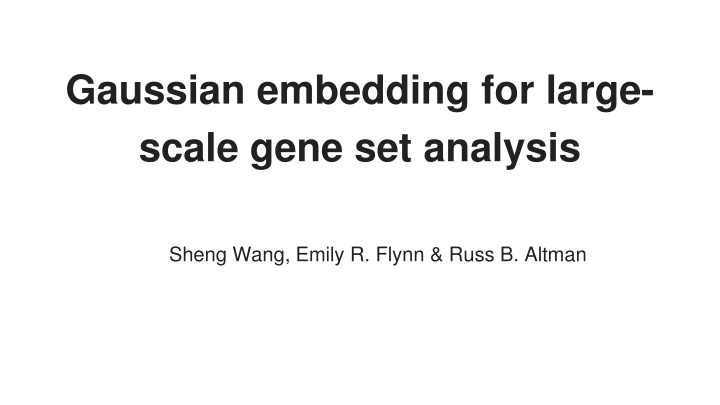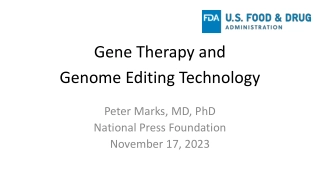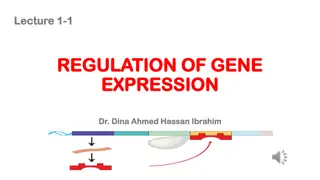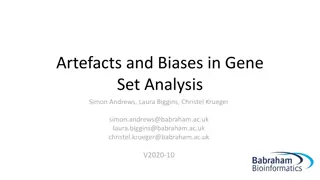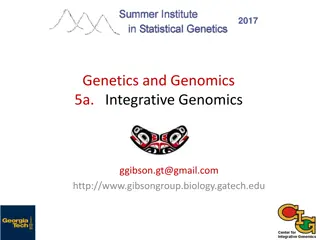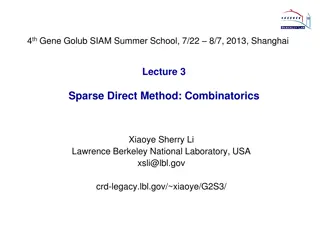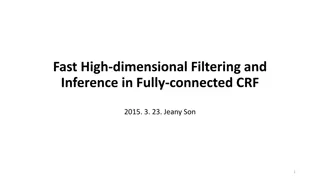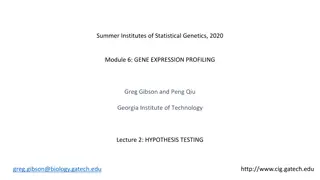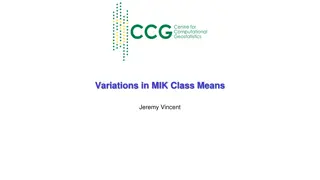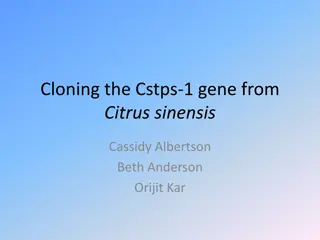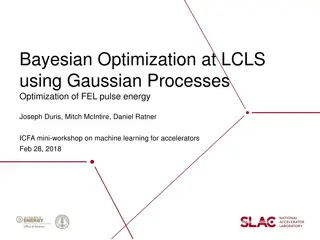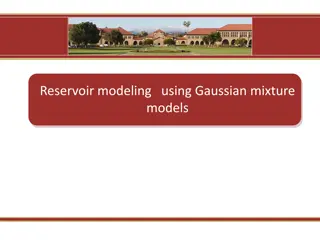Gaussian Embedding for Large-Scale Gene Set Analysis
Gene sets in various downstream analyses such as disease signature identification, drug pathway association, survival analysis, and drug response prediction come from diverse sources and play a crucial role in boosting the signal-to-noise ratio. Gaussian embedding is utilized to model uncertainty, providing a powerful network analysis approach that generates informative vector representations to regularize high-dimensional network data. This method represents each gene as a fixed-length vector in a low-dimensional continuous space, offering insights into molecular interaction networks and addressing bottlenecks associated with traditional averaging methods.
Download Presentation

Please find below an Image/Link to download the presentation.
The content on the website is provided AS IS for your information and personal use only. It may not be sold, licensed, or shared on other websites without obtaining consent from the author.If you encounter any issues during the download, it is possible that the publisher has removed the file from their server.
You are allowed to download the files provided on this website for personal or commercial use, subject to the condition that they are used lawfully. All files are the property of their respective owners.
The content on the website is provided AS IS for your information and personal use only. It may not be sold, licensed, or shared on other websites without obtaining consent from the author.
E N D
Presentation Transcript
Gaussian embedding for large- scale gene set analysis Sheng Wang, Emily R. Flynn & Russ B. Altman
Gene sets Come from many sources Boost the signal-to-noise ratio and increase explanatory power Used in various downstream analyses: disease signature identification drug pathway association prediction survival analysis drug response prediction
Gene sets Bottlenecks: Averaging embedding fails to distinguish different gene sets Existing methods require fixed-length vectors as input High quality compact vectors are needed to avoid overfitting
Network embedding Molecular interaction networks provide novel insights Network embedding is a powerful network analysis approach Generates a highly informative and compact vector representation Regularizes high-dimensional network data Represents each gene as a fixed-length vector Low-dimensional continuous vector space Typically much smaller dimension than the original data
Gaussian embedding Simple aggregation methods such as averaging may not be sufficiently expressive Gene sets can be arbitrarily large Genes in the same set frequently have different functions and are involved in multiple biological processes Gaussian embedding to model the uncertainty of nodes Represents each node as a multivariate Gaussian distribution
Set2Gaussian Input: biological networks and a collection of gene sets Each gene is represented as a single point Each gene set is represented as a multivariate Gaussian distribution The mean vector describes the joint contribution of genes in this gene set The covariance matrix characterizes the agreement among individual genes in each dimension
Set2Gaussian Problem definition
Set2Gaussian Random walk with restart (RWR) captures fine-grained topological properties that lie beyond direct neighbours RWR can correct the noise from missing and spurious genes using network neighbours Define transition matrix B, which represents the probability of a transition from gene i to gene j Define uiSitas an n-dimensional distribution vector in which each entry j contains the probability of gene j being visited from gene i after t steps Define Qktas an n-dimensional distribution vector in which each entry contains the probability of a gene being visited from gene set k after t steps
Set2Gaussian Optimizes two criteria to find the low-dimensional representation Genes with similar diffusion states should be close to each other in the low-dimensional space Genes in a given gene set in the network should have higher probabilities in the Gaussian distribution of that gene set The loss function is defined as L := Lgene + Lset Lgene and Lset represent the loss function based on the above two criteria
Set2Gaussian where DKLis the Kullback Leibler (KL) divergence and where xi is the representation of gene i in the low-dimensional space and wj is the context feature describing the network topology of gene j Now relax the constraint that the entries in isum to one by dropping the normalization factor Use the sum of squared errors instead of KL divergence because iis no longer an n-dimensional probability simplex
Set2Gaussian fkis the multivariate Gaussian probability density function and fk(j) is the probability density of gene j Note: Mahalanobis distance of gene j from the mean and covariance matrix
Results Gene set member identification Set2Gaussian significantly outperformed the proposed baseline gene set representation approaches and hypergraph embedding on identifying gene set members in all three datasets at all size categories (P < 0.05; Wilcoxon signed-rank test)
Results Tumour stratification and subnetwork identification in sarcoma Set2Gaussian s subtypes had significantly different survival in sarcoma across groups, whereas subtypes from the other three approaches did not
Results Downsize existing previously defined gene sets in GSEA For all cell lines, Set2Gaussian enriched for more gene sets in comparison to Standard. For 60 of 69 cell lines, Set2Gaussian enriched for more gene sets in comparison to All.
